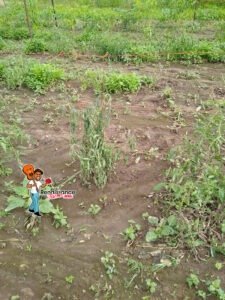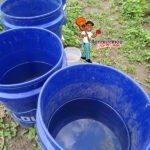Hi, my name is Curtis and I live in Bloomington Indiana USA. I am writing this article to bring to light how climate change has been slowly affecting my fellow farmers and me. I would also like to mention some specific things that I see changing right before my very eyes.
In the early 90s I lived in the Bronx NYC. There, I had a very small garden and grew tomatoes each spring and all through the summer. In those days I could almost predict what the weather was going to be and when, simply because it did about the same thing every year. For example, I would plant my tomato garden starting on April 15 every year with no loss to frost or freeze. In fact, in 8 years I never lost one plant due to deep frost. Times and weather conditions have certainly changed. As a farmers, we pay very close attention to weather and I can’t say that I know one farmer who would tell you that the climate is the same as 30 years ago.
Even when I moved to Indiana in 2002, I was still mostly able to plant on the same schedule as I did in NYC. Today things have changed quite a lot, the weather is unpredictable, harsh and unbalanced. In the last 15 years I have experienced more extreme weather than I ever have in my 50 something years of life. As a full time tomato farmer and gardener, I have always been very sensitive to changing weather regardless to what the change is. Yes, as a farmer dealing with weather is kind of like being a parent to a new born baby. We look for any little signs of change, distress etc, and decide how we can minimize the impact on our farms. Well, some of the signs that I have seen in the weather in the last 15 years are just down right drastic! Extreme heat, late and early freezes, hot winters and an over abundance of rain and floods and more, have caused us all to make drastic changes in the way in which we farm. Without pun, even livestock farmers are really feeling the heat

Mays-Greenhouse-After-Flood
For some farmers, change doesn’t come easily because it would mean heavy investments in infrastructure, which, in most cases, cannot be attained because of limited funds. Some farmers have lost their entire crops and livestock pack in consecutive years. Things such as those can be difficult to recover from. For me, it’s been touch and go since 2017. I have only been able to carry on because of God’s grace and the smaller size of my operation. For the last few years I watched my local greenhouse (Mays), which was established since 1965, get washed away twice, just in the last 3 years. Before that, they had never been flooded. Likewise, five miles away, I have watched my own small farm burned up with heat, frozen in May and have 15 inches of rain in just two days, all in the last three years.
This year in 2021 I lost hundreds of plants to severe flood. We got 12 inches of rain in 16 hours. In the days that followed, it never stopped raining. My empty 5 gallon buckets were just about half filled after the first night of very heavy rain. The following two days of rain rendered them full. Plant variety name labels were washed away. Some smaller plants (2 feet tall or so) were under 6 inches of sod compost and mud, never to be found again. Many plants were just missing. My 950 plant garden looked like a dam had been broken and released through its once pretty tomato rows. My losses and heart were heavy. My immediate loss was pretty evident, I was depressed!

Dead Tomato Plant After Heavy Rain In June 2021
As the days passed by, with not much break in the weather, I found solace in the fact that at least the rains weren’t as heavy as they initially were. I after that burst of rain storms, I immediately turned my attention to saving what was left of my garden, starting with the triage of hurt plants. That project had to wait another week because the entire garden was saturated and not workable. The soil was too soft for walking. When the sun finally emerged about a week later, I had already lost about 200 plants, with about another 130 not having identifying labels. I had always made written garden maps. This year the maps were a little delayed because just like the year before, the same cold weather in mid-May forced us to push our planting date back. When it was finally time to plant, I wanted to do just that, and later would designate a day for mapping. That didn’t happen before the rains came.
One of the biggest changes that I noticed in 2021 is in the intensity of the sun. It has occurred to me that it hasn’t had its same intensity for a while. Even in mid July the sun looked like a fall sun. My tomatoes have changed had delayed ripening times. I have also noticed slight changes in flavor profiles of my crops. Could this be because of having too much water and not enough sun intensity? I am not an expert but I would say most definitely!
If the climate continues to be unpredictable and as radical, farmers may eventually have to grow in more controlled climates, such as greenhouses. That would require huge investments such as Heating, cooling and other infrastructure. Once this happens, it will make farming, especially for small growers, much more difficult.
What To Do About Climate Change As It Affects Your Farm.
Contact your State representatives as often as you can, letting them know how the changing climate is affecting your small or large farm. As farmers we are responsible for feeding our communities and country. Our roles are very important in every way! Our plights should not be ignored! Rather, we should be cherished for the the great works, created only with hard labor and perseverance, that we do! I stand with YOU!!
~Curtis~
- hoop-house Over My Heirloom Tomatoes
- Mays-Greenhouse-After-Flood
- 5 Gallon Buckets After One Night Of Rain. June 2021








